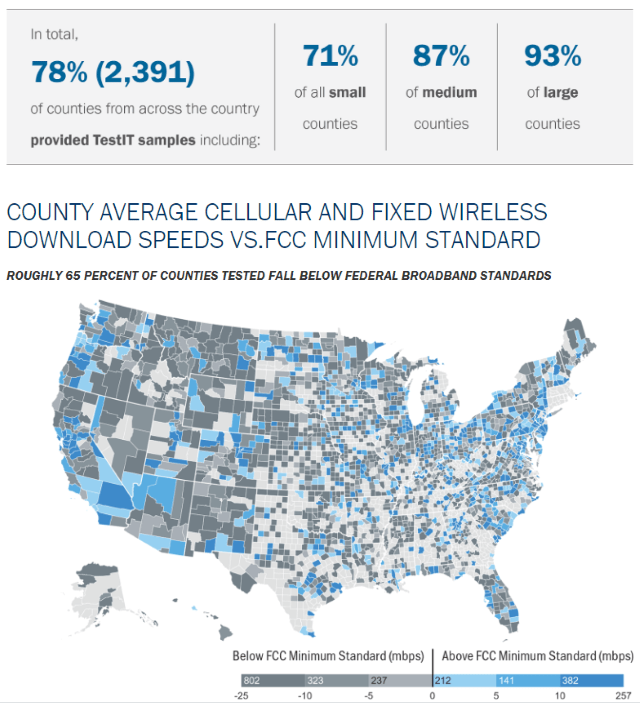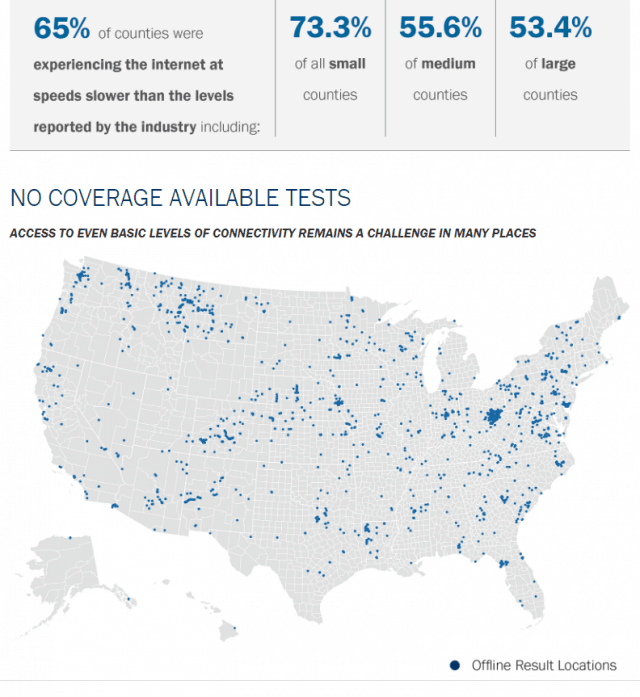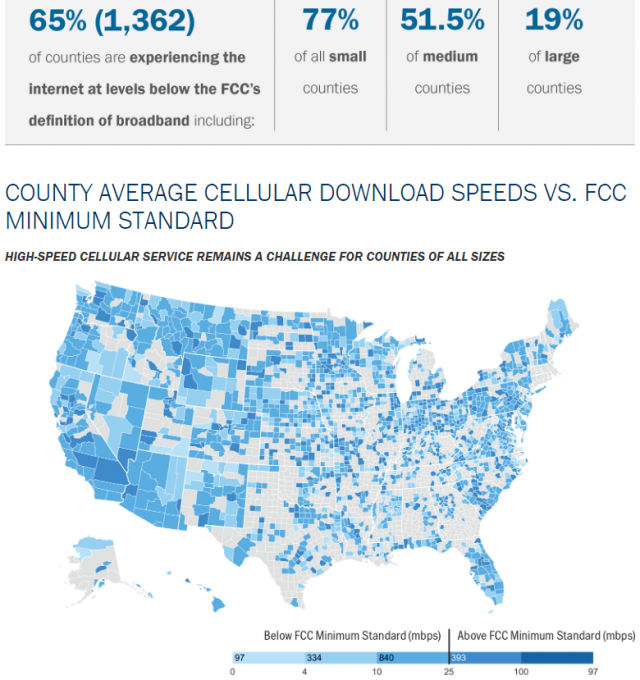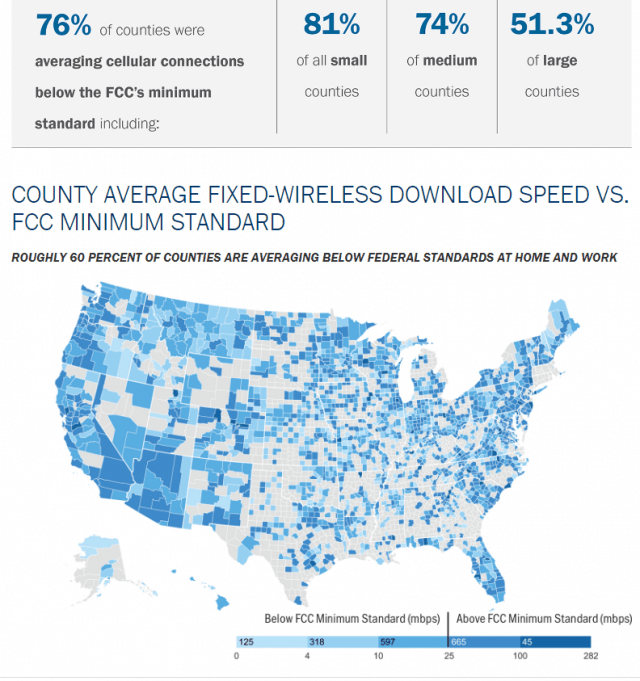 Nearly two-thirds of counties in the United States have real world wireless download speeds below the Federal Communications Commission’s minimum to be considered broadband — 25 Mbps. In rural counties, the number is even higher: 77% cannot get reliable speed at or above 25 Mbps.
Nearly two-thirds of counties in the United States have real world wireless download speeds below the Federal Communications Commission’s minimum to be considered broadband — 25 Mbps. In rural counties, the number is even higher: 77% cannot get reliable speed at or above 25 Mbps.
That is the finding of a new report, “Understanding the True State of Connectivity in America,” produced by the National Association of Counties (NAC), and a handful of other rural-focused advocacy groups.
Unlike the Federal Communications Commission, which relies on providers voluntarily supplying the broadband speeds they claim to offer customers, NAC developed TestIT, an app allowing the public to test actual wireless broadband speeds and report back results. Since March 2019, users have conducted over 100,000 speed tests from 2,391 U.S. counties (representing 78% of all counties nationwide).
The results found widespread differences between the speeds advertised to customers and those experienced by them. Among fixed wireless broadband networks, almost 60% of counties lacked providers that consistently supplied service with speeds at or above 25 Mbps. Wireless speed was inconsistent everywhere, but particularly in rural areas, where 74% of rural counties had slow speed service.

“The TestIT app results show a disparity of broadband access across America,” said NAC executive director Matthew Chase. “Armed with this data, we will advocate for adequate funding for broadband infrastructure and better inform federal, state and local decision-making to help level the playing field.”
The app also identified a much larger section of rural America where there was no service at all, despite claims of coverage from wireless providers on coverage maps. The organization believes this disparity may be coming from taking providers at their word instead of independently verifying actual coverage is available.

“Accurate connectivity data is the foundation for investments in our nation’s broadband infrastructure,” the report found. “Unfortunately, connectivity data provided to the FCC is often inaccurate and inflated — leaving many communities overlooked and disconnected.”




 Subscribe
Subscribe